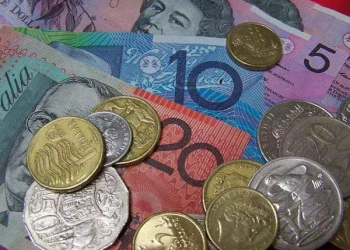The Australian Dollar (AUD) rebounded on Tuesday after suffering initial losses, as the US Dollar (USD) weakened amid declining US Treasury yields. Investors are now focusing on Australia’s upcoming monthly inflation report, set to be released Wednesday, which is expected to provide critical insights into future monetary policy decisions following the Reserve Bank of Australia’s (RBA) recent hawkish stance on interest rates.
Meanwhile, the People’s Bank of China (PBOC) injected CNY300 billion into the market through a one-year Medium-term Lending Facility (MLF) on Tuesday, maintaining the rate at 2%. The central bank also conducted a seven-day reverse repo operation, injecting CNY318.5 billion at a rate of 1.50%. As Australia and China share a close trade relationship, shifts in China’s economic policy could directly influence the Australian Dollar.
Despite the recovery in the AUD, it faces headwinds from rising risk sentiment. On Monday, US President Donald Trump reiterated plans to impose extensive tariffs on imports from Canada and Mexico once a month-long delay expires next week, calling the move a necessary response to what he described as the US being “taken advantage of” by foreign nations. These developments add uncertainty to the market, affecting risk assets like the AUD.
The Australian Dollar found some support as China unveiled its 2025 annual policy statement, which focuses on rural reforms and revitalizing the property market. In addition, Chinese state-backed developers are increasing land purchases, benefiting from the government’s decision to ease home price restrictions in an effort to stabilize the troubled property sector.
The US Dollar Index (DXY), which tracks the USD against six major currencies, fell to 106.50 as US Treasury yields dropped, with the 2-year and 10-year yields falling to 4.14% and 4.37%, respectively. Federal Reserve Bank of Chicago President Austan Goolsbee commented that the Federal Reserve needs more clarity before considering interest rate cuts.
In economic data, the US Composite PMI dropped to 50.4 in February from 52.7 the previous month. While the Manufacturing PMI rose to 51.6, surpassing forecasts, the Services PMI fell short, dropping to 49.7. US jobless claims also increased, with Initial Jobless Claims for the week ending February 14 rising to 219,000, higher than expected.
The RBA made headlines last week with its first rate cut in four years, lowering the Official Cash Rate (OCR) by 25 basis points to 4.10%. Governor Michele Bullock acknowledged the impact of high interest rates but cautioned against prematurely declaring victory over inflation, stating that future rate cuts are not guaranteed despite market expectations.
Technical Outlook
As of Tuesday, the AUD/USD pair was trading around 0.6340, testing a nine-day Exponential Moving Average (EMA) resistance level at 0.6343. A break above this level could lead to further gains, with key resistance at 0.6400 and 0.6440, the upper boundary of an ascending channel. Immediate support is seen at 0.6329, the 14-day EMA, and the channel’s lower boundary.
Related Topics:



























